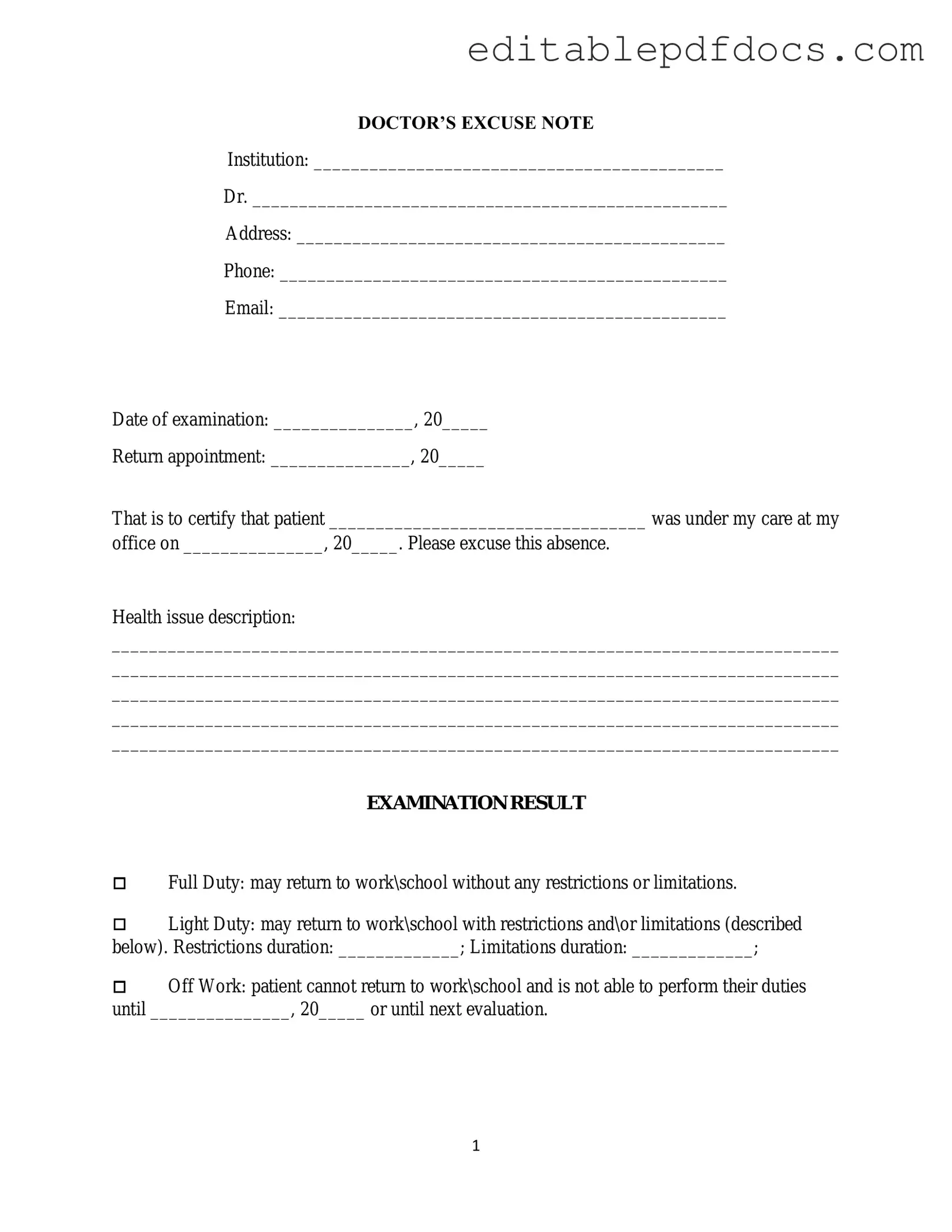Filling out a doctor's excuse note form may seem straightforward, but many people make common mistakes that can lead to complications later on. One frequent error is providing inaccurate or incomplete patient information. Ensure that the patient's name, date of birth, and contact details are correct. If any of this information is missing or incorrect, it can create confusion for employers or schools.
Another mistake is neglecting to include the specific dates of absence. Clearly stating the start and end dates of the absence is essential. Without these dates, the note may not serve its intended purpose, leaving the patient in a difficult position when trying to explain their absence.
Some individuals forget to mention the reason for the visit. While privacy is important, a general description of the medical issue can help validate the absence. A simple note indicating that the patient was seen for a medical condition can make a significant difference in how the note is received.
In addition, failing to obtain a doctor's signature is a common oversight. A doctor's signature is not just a formality; it is a vital part of the document that confirms its authenticity. Without it, the note may be considered invalid, and the patient could face further scrutiny.
Another frequent error is using an outdated or incorrect form. Medical practices often update their forms, and using an old version can lead to confusion. Always ensure that you have the most current version of the doctor's excuse note form to avoid any issues.
Some people also overlook the importance of legibility. If the handwriting is difficult to read, it can lead to misunderstandings. Whenever possible, type the information or ensure that handwriting is clear and neat.
Additionally, patients sometimes forget to include follow-up instructions. If the doctor recommends further appointments or specific care, including this information can help the employer or school understand the patient's ongoing needs.
Another mistake is not keeping a copy of the note for personal records. Having a copy can be useful in case of disputes or if further verification is needed later on. It’s always wise to maintain a record of important documents.
Finally, some individuals fail to follow up with their employer or school after submitting the note. Communication is key. A quick follow-up can help clarify any questions and ensure that the absence is understood and accepted.
